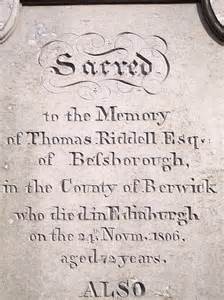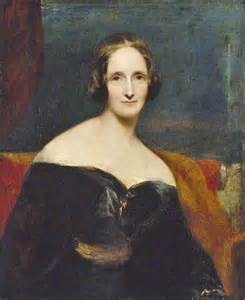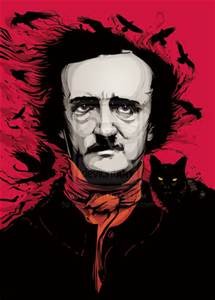Posted by Libby Hayhurst
It’s that time of year again; there’s a nip in the air, pumpkins line the street, and subpar “scary” movies have begun to stream 24/7 on your television. As a Halloween enthusiast, I have eagerly participated in all October activities– binge watching Tim Burton films, consuming all things pumpkin, and recently, taking my writing to the graveyard (and no, that’s not some euphemism for writer’s block).
I first stumbled on my new creative space by accident. It was an unusually warm day for October, and I decided to ditch my computer in favor of sunlight. Taking a journal, I wandered through downtown Lexington until I stumbled on the Stonewall Jackson Cemetery. The grounds were pleasant, quiet, and well-maintained, so I decided to brave the ghosts of long-dead soldiers and set up camp by a gravestone.
My afternoon in the cemetery reading and writing among the long-dead got me to thinking about literature’s relationship with the paranormal. So in keeping with the Halloween spirit I’ve compiled a list of the top three spookiest literary facts.
1. J.K Rowling’s inspiration for Lord Voldemort
Over the summer, I was able to visit Edinburgh for my birthday, an opportunity I took full advantage of to nourish my Harry Potter fandom. I sat in the famous Elephant Cafe (Rowling’s old haunt) and gazed out at the Edinburgh Castle. I walked the grounds of the George Heriot School, which Rowling drew upon for Hogwarts, and guessed at how the city breathed life into her work. However, the main event did not take place until long past sunset during a ghost tour of Edinburgh’s haunted grounds.
I came face to face with Voldemort.
Or I guess, technically, face to face with his grave.

According to our tour guide, when J.K Rowling lived in Edinburgh she took frequent strolls through the Greyfriars Kirkyard. The graveyard, small with a surprisingly high body count due to its many mass graves, is said to be haunted by some of the most important historical figures in Scottish history. However, it appears that Rowling was captured by Tom Riddell’s unassuming headstone, and later ascribed his name to the book’s villain. To this day, Harry Potter fans visit the site, constructing a sort of Voldemort shrine around the grave with teasing notes to Tom Riddell and other Harry Potter memorabilia.
2. Mary Shelley kept her husband’s heart
 In 1820, Shelley’s husband Percy met a tragic end when his boat went down in a storm, drowning himself and his nine companions. When he was retrieved from the water two days later, he was recognizable only by his clothing and a book Mary had placed in his pocket beforehand. But here’s where it gets spooky: When the cremators tried to incinerate Percy’s body, his heart refused to burn. (Note: This is absolutely a true story. Scientists believe the heart refused to burn because it had been calcified when Percy took ill with TB).
In 1820, Shelley’s husband Percy met a tragic end when his boat went down in a storm, drowning himself and his nine companions. When he was retrieved from the water two days later, he was recognizable only by his clothing and a book Mary had placed in his pocket beforehand. But here’s where it gets spooky: When the cremators tried to incinerate Percy’s body, his heart refused to burn. (Note: This is absolutely a true story. Scientists believe the heart refused to burn because it had been calcified when Percy took ill with TB).
Although I would expect no less than creepy of Frankenstein author Mary Shelley, her method of preserving her husband’s memory is nearly stranger than her fiction. After the funeral, the heart was turned over to Mary who, according to legend, took it with her everywhere.
3. Poe’s mysterious death
 Many of Edgar Allan Poe’s stories, essays and poems work in the horror tradition. Classic pieces such as “The Tell Tale Heart,” inspired by a gruesome murder, and “The Raven” are especially remembered around this time of year and translated into Halloween episodes (see The Simpson’s reenactment of “The Raven”). The darkness in his work reveals some of the author’s psyche, as he struggled to grapple with the death of his wife and mother, and his own self-destructive tendencies.
Many of Edgar Allan Poe’s stories, essays and poems work in the horror tradition. Classic pieces such as “The Tell Tale Heart,” inspired by a gruesome murder, and “The Raven” are especially remembered around this time of year and translated into Halloween episodes (see The Simpson’s reenactment of “The Raven”). The darkness in his work reveals some of the author’s psyche, as he struggled to grapple with the death of his wife and mother, and his own self-destructive tendencies.
Sadly, tragedy would follow Poe to the end in his mysterious death. To this day, no one knows exactly how or why Edgar Allan Poe died. The only facts remain that he was found, delirious and half-conscious, at a public house wearing clothes that were clearly not his own. He was disoriented and could not remember what happened to him. Although a multitude of theories exist explaining his death, the most popular theory is that Poe was perhaps a victim of cooping– a practice in which vulnerable individuals were kidnapped, beaten, disguised and made to vote for a certain party. The fact that Poe was found on election day largely feeds this theory.
Unfortunately, in my research I was unable to find any hauntings of dead authors or poets. However, while you may not be able to have a seance with Ernest Hemingway or Flannery O’Connor, you can visit their graves. More information about famous writers’ headstones and their locations here.
Do you know of any similarly haunting literary peculiarities?
